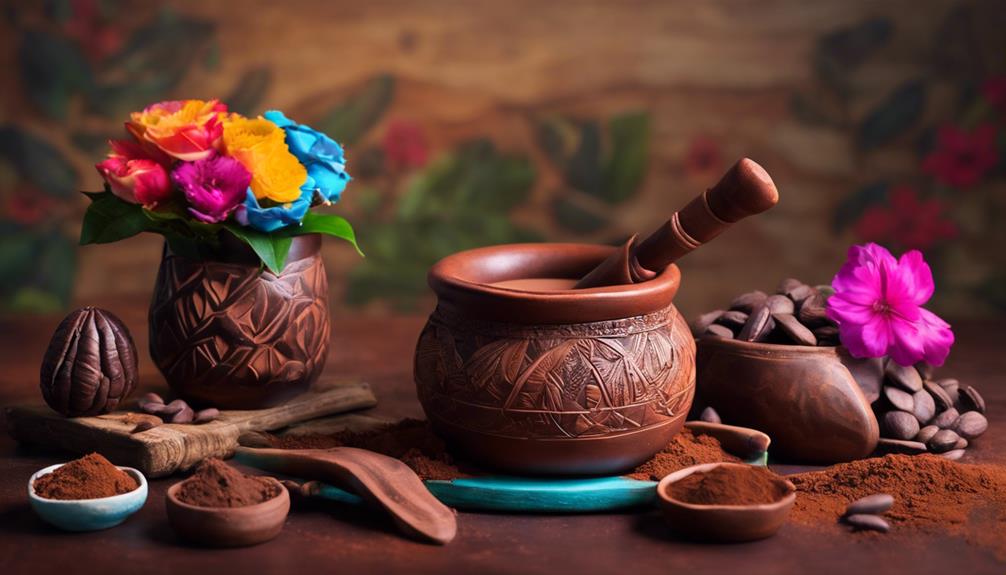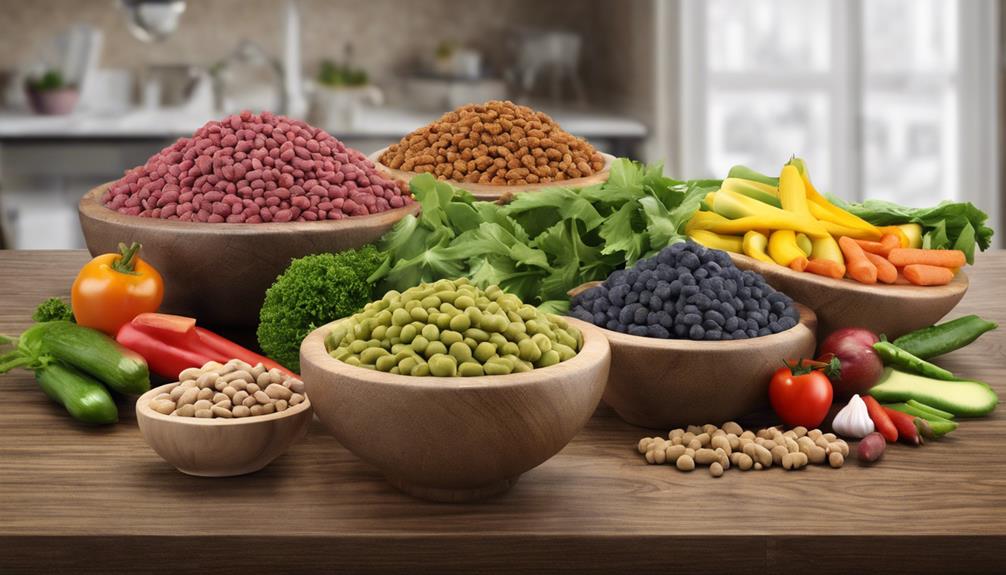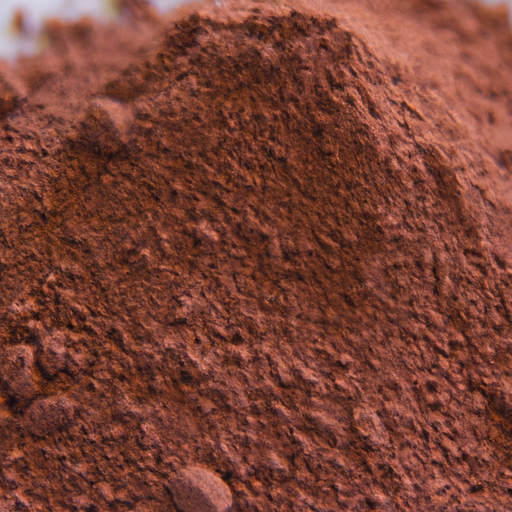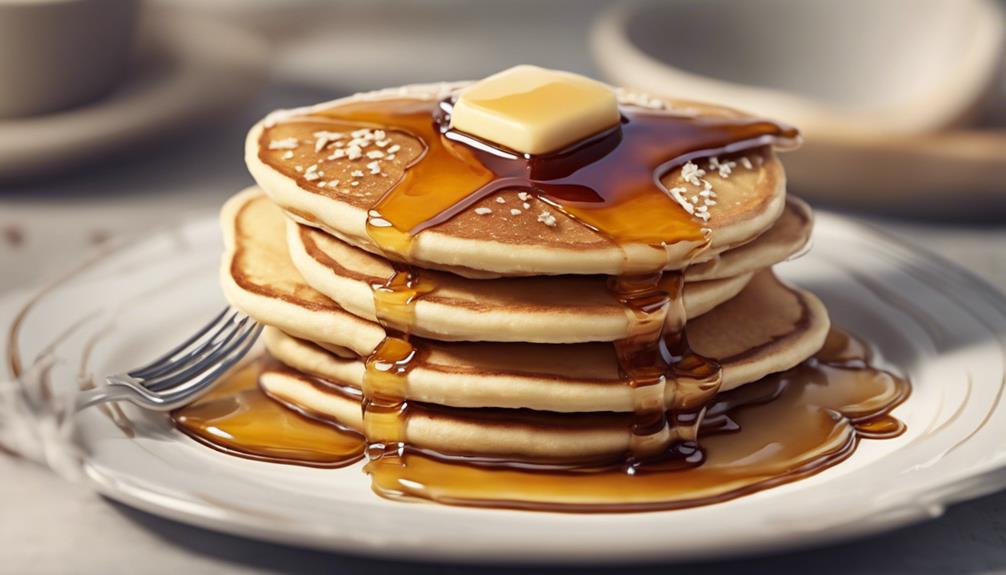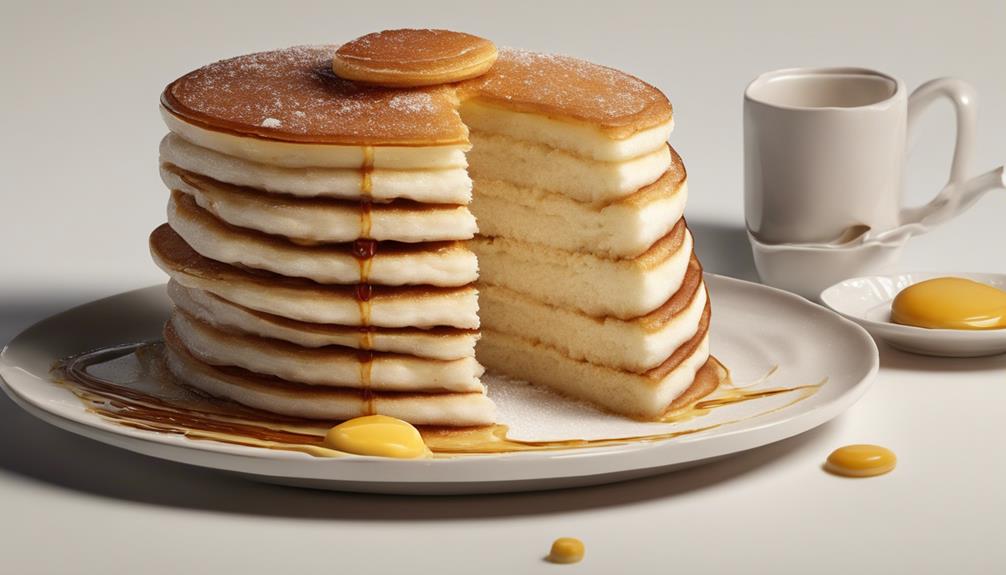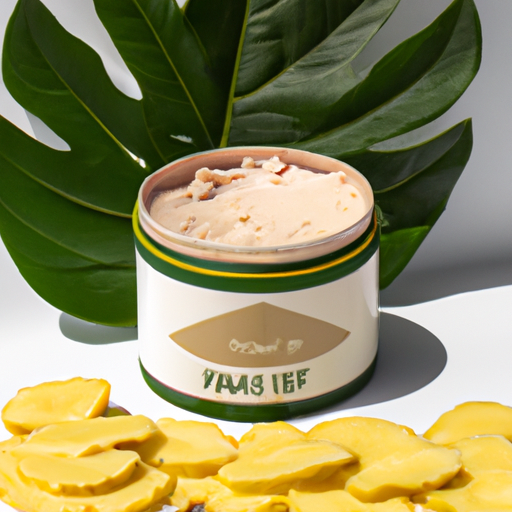Ceremonial cacao is a truly unique experience, with origins in sacred practices on regenerative farms in Peru and Ecuador. These farms cultivate heirloom varieties like Chuncho for their rich flavors and spiritual importance. By using ethical farming practices and energy-infused preparation, the ceremonial essence of cacao is enhanced, along with its gentle stimulation and well-being benefits. Through cacao, one can spiritually connect, explore inner realms, and feel the heart-opening effects it offers.
The Chuncho bean, with its fruity notes and sustainable cultivation, further elevates the ceremonial journey. If you're curious about the special qualities of ceremonial cacao, there's a lot more to uncover about its rich history and transformative potential.
Key Takeaways
- Rooted in regenerative farming practices for purity.
- Heirloom varieties like Chuncho for exceptional flavor.
- Energy infused with positive intentions for spiritual connection.
- Medicinal properties promote well-being and heart health.
- Facilitates emotional release and inner healing in ceremonies.
Origin and Sourcing of Ceremonial Cacao
When acquiring ceremonial cacao, I prioritize choosing beans grown in biodiverse, regenerative farms to guarantee purity and integrity. This focus ensures that the quality of the ceremonial cacao remains uncompromised, preserving its unique vibrational qualities.
Heirloom cacao varieties like Chuncho are often selected for their exceptional flavor and rich history. These beans have a deep-rooted connection to regions such as Peru, Ecuador, and Guatemala, known for their superior cacao production. By carefully selecting cacao from these areas, we can uphold the authenticity and spiritual significance of the ceremonial experience.
The traditional cultivation methods utilized in these regions play a significant role in shaping the flavor profile of the cacao, adding layers of complexity and depth. Through sustainable and ethical sourcing practices, we not only honor the heritage of ceremonial cacao but also support the communities that have nurtured this sacred crop for generations.
Ethical Farming Practices for Cacao
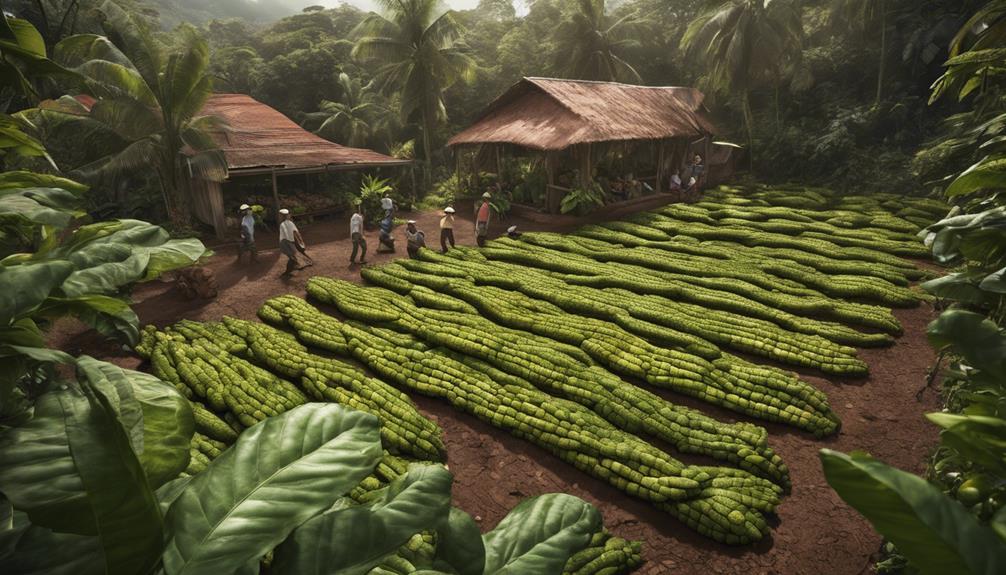
Utilizing ethical farming practices is essential for cultivating high-quality ceremonial cacao while preserving biodiversity and supporting sustainable agriculture. Sacred to many cultures, cacao requires care and respect from seed to cup. By embracing organic agroforestry methods and traditional growing techniques, farmers can nurture the sacred cacao plant while safeguarding the environment. Heirloom cacao strains like Arriba Nacional are treasured for their exceptional quality and unique flavors, adding a touch of sacredness to each ceremonial experience. Cultivating cacao within existing forests not only protects the habitat of forest-dwelling species but also upholds the sanctity of this special crop. To maintain the purity and quality of ceremonial cacao, it's crucial to avoid genetic modification, high-heat roasting, and alkalinization processes. By honoring these ethical farming practices, we can ensure that each sip of ceremonial cacao is a true celebration of quality and sustainability.
| Ethical Farming Practices | Benefits | Examples |
|---|---|---|
| Organic Agroforestry | Regenerative cultivation | Traditional growing techniques |
| Heirloom Cacao Strains | Exceptional quality and flavor | Arriba Nacional from Ecuador |
| Cultivating within forests | Protects biodiversity and supports sustainability | Preserves forest-dwellers' habitat |
Energy Infusion in Cacao Preparation
When preparing ceremonial cacao, it's essential to start by conducting ritualistic cacao blessings. Set your intentions with spiritual purpose, infusing the cacao with vibrational energy.
This process enhances the energetic properties of the cacao, contributing to its unique and sacred essence.
Ritualistic Cacao Blessings
During ceremonial cacao blessings, practitioners infuse the cacao preparation with positive energy and intentions. It's a sacred ritual where love, gratitude, and reverence are poured into the ceremonial cacao drink. This energy infusion is a key element of spiritual practices, enhancing the cacao's healing properties. By mindfully setting clear intentions during the preparation process, the cacao becomes a conduit for spiritual connection. The table below highlights the intentions infused into the cacao during blessings:
| Energy Infused | Intentions |
|---|---|
| Love | Healing |
| Gratitude | Connection |
| Reverence | Transformation |
| Blessings | Unity |
| Harmony | Peace |
Spiritual Intention Setting
Infusing spiritual intentions into the preparation of ceremonial cacao enhances its energy and sacred significance. When working with ceremonial-grade cacao, setting spiritual intentions is a potent practice that magnifies the cacao's healing properties and deepens its connection to spiritual dimensions.
By infusing love, gratitude, and reverence during the cacao preparation process, its energy becomes more powerful and aligned with spiritual practices. This traditional approach honors the sacredness of the cacao bean and allows for a deeper, more meaningful experience during ceremonies.
The spiritual intention setting in cacao preparation not only amplifies the cacao's vibrational energy but also aids in activating its healing potential and fostering a stronger connection to the spiritual essence of this sacred plant.
Vibrational Energy Infusion
To enhance the energetic frequency and spiritual potency of ceremonial grade cacao, we intentionally transfer positive intentions, prayers, and healing energies during its preparation through vibrational energy infusion. By infusing the cacao with these sacred energies, we aim to elevate its spiritual well-being, making it a powerful tool for connection and healing.
This process involves engaging in sacred rituals, chanting mantras, or practicing meditative techniques to imbue the cacao with specific qualities. Through vibrational energy infusion, the ceremonial cacao becomes a conduit for intention setting and spiritual exploration.
Embracing this practice allows us to honor the ancient traditions surrounding cacao while harnessing its transformative potential for our spiritual journeys.
Medicinal Properties of Ceremonial Cacao
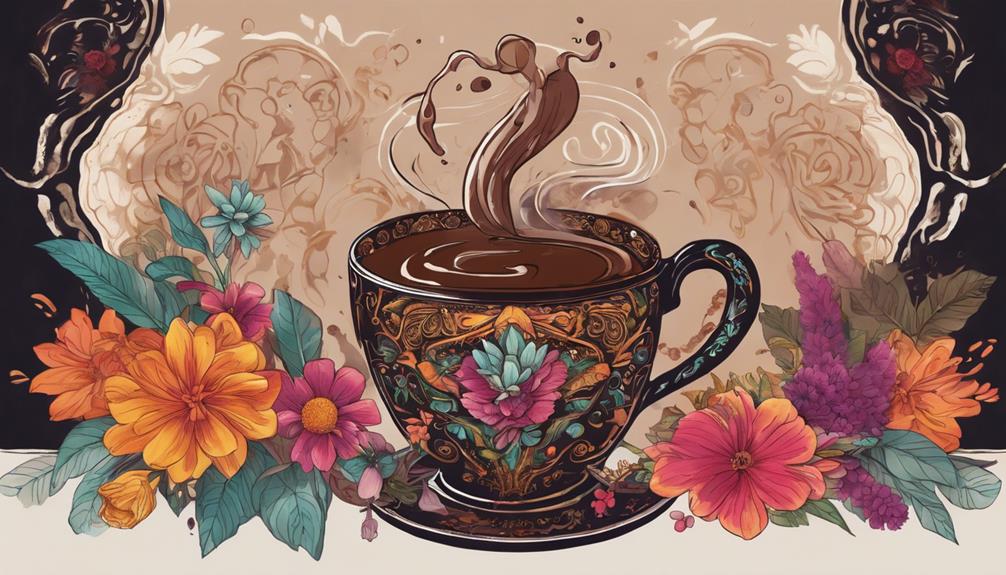
Rich in theobromine and antioxidants, ceremonial cacao offers a range of medicinal properties that support physical and mental well-being. Take a look at the table below to see some of the health benefits associated with this powerful plant medicine:
| Medicinal Properties | Description |
|---|---|
| Natural Stimulant | Theobromine in ceremonial cacao provides a gentle energy boost without the jittery effects of caffeine. |
| Antioxidant Content | High levels of antioxidants may help protect the heart and reduce inflammation in the body. |
| Antidepressant Effects | Compounds in ceremonial cacao could potentially alleviate symptoms of stress, anxiety, and depression. |
| Cognitive Enhancement | Ceremonial cacao promotes mental clarity, focus, and improved cognitive function. |
These properties make ceremonial cacao not only a delicious treat but also a valuable ally in maintaining both physical health and emotional well-being.
Spiritual Connection Through Cacao
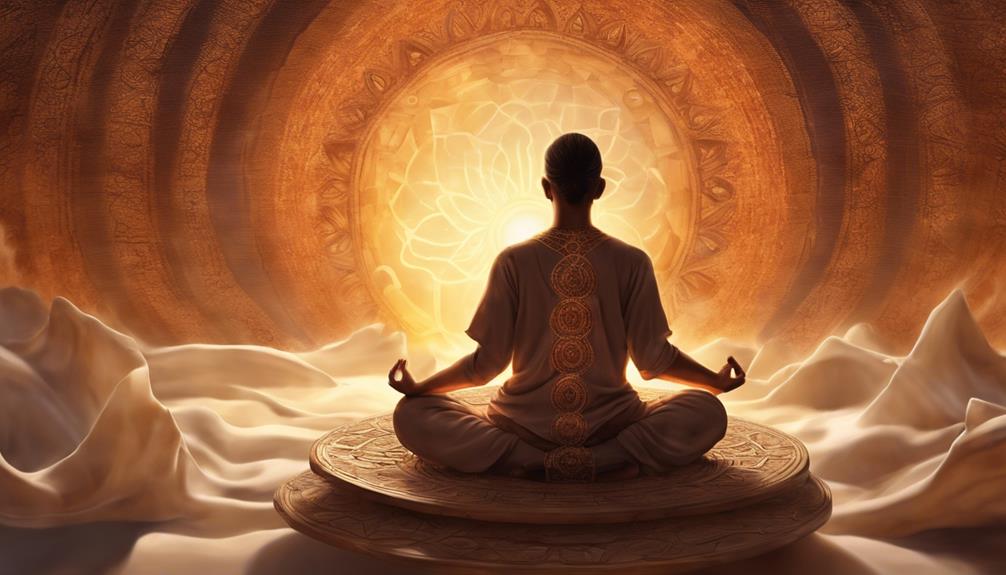
Cacao's heart-opening properties serve as a sacred gateway to enhance spiritual connections and experiences. When working with ceremonial cacao, it's essential to approach it with reverence and intention, allowing its spirit to guide you towards deeper spiritual domains.
Here are three ways in which ceremonial cacao can facilitate a profound spiritual connection:
- Entheogenic Properties: Ceremonial cacao belongs to a category of plants known as entheogens, substances that have been used for centuries to enhance spiritual experiences. Through its gentle yet powerful medicine, cacao can help individuals access altered states of consciousness conducive to spiritual growth and connection.
- Sacred Rituals: Specific conditions must be maintained to activate the ceremonial aspects of cacao during rituals. By engaging in ceremonial practices with cacao, individuals can create a sacred space for spiritual exploration, introspection, and connection with the divine.
- Spiritual Enrichment: Connecting with the spirit of cacao can deepen and enrich spiritual practices. The plant's energy can resonate with our own, guiding us towards self-discovery, healing, and a greater sense of interconnectedness with the universe.
Heart-Opening Experience With Cacao
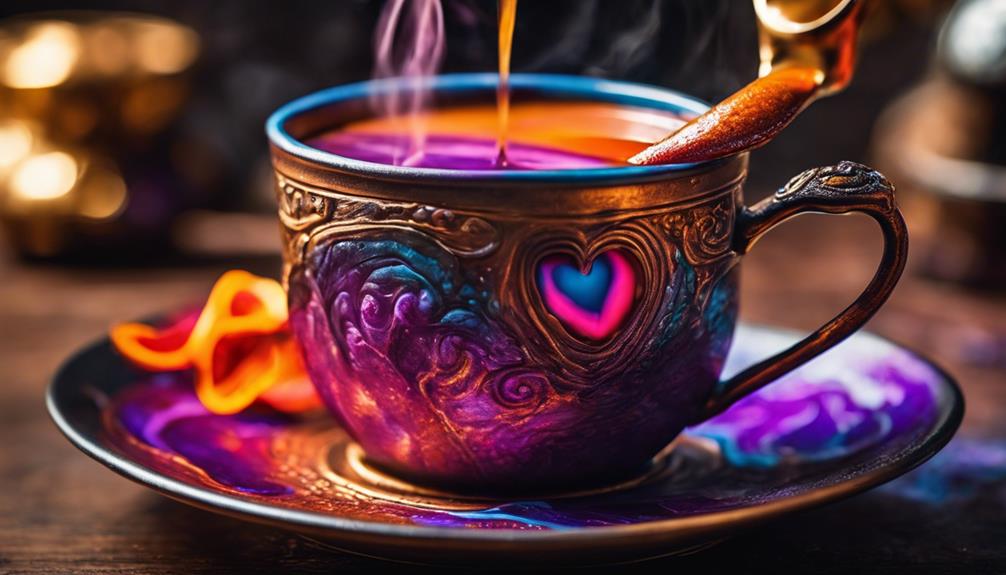
When exploring the heart-opening experience with ceremonial cacao, one can investigate profound emotional connections and inner healing. It's a journey of self-discovery and vulnerability, where the sacred elixir of cacao acts as a gentle guide, leading us to the depths of our hearts. Through ceremonial practices and intention setting, we can connect with the cacao on a soul level, allowing it to unravel the layers of our emotions and facilitate healing.
| Heart-Opening Experience | Connect With the Cacao |
|---|---|
| Opens pathways for emotional release | Establishes a deep bond with the cacao |
| Facilitates introspection and self-reflection | Enhances emotional awareness |
| Fosters love and compassion | Creates a safe space for inner healing |
In these moments of connection, we find solace in the warmth of cacao, embracing its nurturing energy as it opens our hearts to love, compassion, and healing. Through this shared experience with the cacao, we discover the beauty of vulnerability and the strength in embracing our emotions.
The Chuncho Bean in Ceremonial Cacao
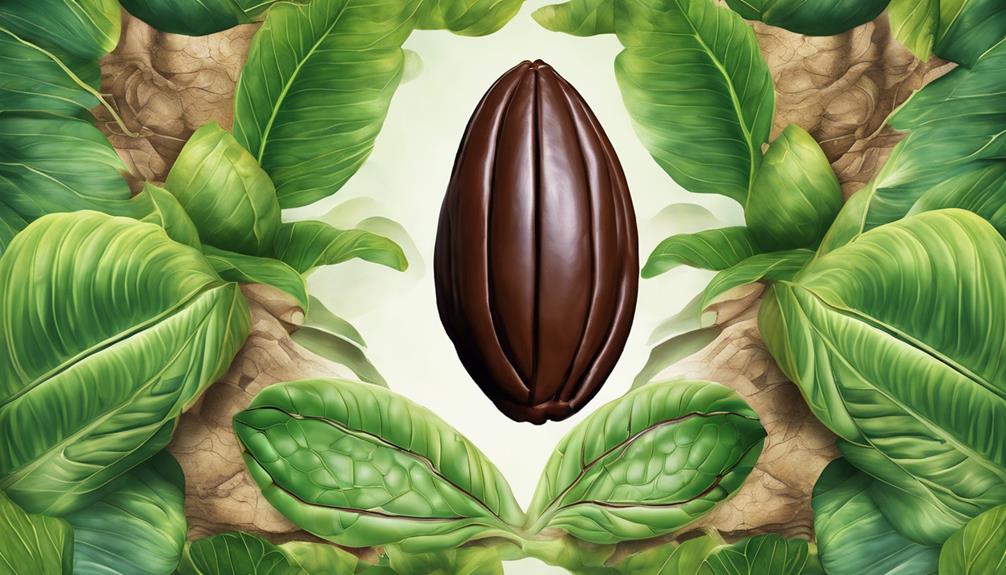
The Chuncho bean reveals a world of tradition, flavor, and reverence intertwined in the art of cacao ceremonies.
This specific cacao variety carries spiritual significance and lore, adding depth to the ceremonial rituals it's used in.
Exploring the Chuncho bean exposes a rich history in ceremonial cacao, boasting a unique flavor profile that offers nuanced taste experiences.
Rich Chuncho History
In the domain of ceremonial cacao, exploring the rich history of the Chuncho bean reveals a tale steeped in ancient traditions and unparalleled flavor. The Chuncho bean, a rare and non-GMO cacao variety, holds a special place in the hearts of cacao enthusiasts for its exceptional quality and unique flavor profile.
Originating from the Amazon rainforest in Peru, this bean's history dates back to ancient civilizations, adding depth to its cultural significance.
Here are three reasons why the Chuncho bean is a favorite choice for ceremonial cacao:
- Floral and Fruity Notes: The Chuncho cacao is known for its distinct floral and fruity notes, giving it a delightful and one-of-a-kind taste.
- Sustainable Cultivation: Traditionally grown in biodiverse and sustainable agroforestry systems, the Chuncho bean reflects a deep connection to the earth and its ecosystems.
- Heart-Opening Qualities: Ceremonial cacao made from Chuncho beans is cherished for its heart-opening and spiritual qualities, enhancing the ceremonial experience.
Flavor Profile Nuances
Exploring the nuances of flavor in ceremonial cacao crafted from Chuncho beans reveals a sensory journey unlike any other, where floral, fruity, and nutty undertones intertwine to create a truly exquisite experience.
The Chuncho bean, with its rare and prized flavor profile, brings a touch of the Andes Mountains to the ceremonial cup. The growing conditions of the Chuncho bean play an essential role in shaping its exceptional taste and aroma, making it a premium variety for ceremonial practices.
When sipping on Chuncho bean ceremonial cacao, one can taste the richness of the earth, the sweetness of fruits, and the subtle hint of nuts, all harmoniously blended to enhance the ritual's sensory experience.
This unique flavor profile sets Chuncho bean ceremonial cacao apart as a sought-after delicacy for those seeking a profound and flavorful journey.
Spiritual Significance Lore
Embarking on a spiritual journey through ceremonial cacao, one uncovers the profound lore surrounding the Chuncho bean and its transformative essence.
The Chuncho bean is a rare and non-GMO cacao bean essential for high-quality ceremonial cacao. It's revered for its rich flavor profile and unique characteristics that enhance spiritual practices. Farmers meticulously select and cultivate the Chuncho bean to preserve its integrity, as its growing environment directly influences its flavor and spiritual significance in ceremonial cacao.
Considered a sacred plant in ceremonial cacao rituals, the Chuncho bean is prized for its heart-opening and consciousness-expanding properties, making it a crucial element in creating a deeply meaningful and transformative ceremonial experience.
Crafting Process of Ceremonial Cacao
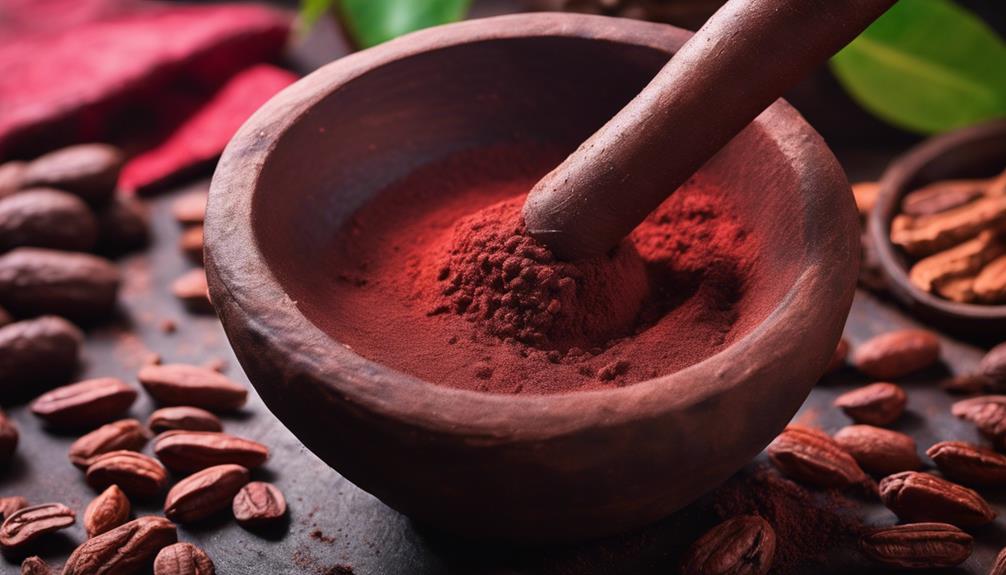
Crafting ceremonial cacao involves a meticulous process that starts with the organic cultivation of cacao tree beans. These beans are carefully harvested and fermented to develop their rich flavor profile. The fermentation process is vital as it brings out the unique taste that sets ceremonial cacao apart from regular chocolate. After fermentation, the beans undergo a low-heat roasting process to further enhance their flavors without losing their nutritional benefits.
Once roasted, the cacao beans are finely ground to create a smooth, unprocessed chocolate paste that's distinct from the store-bought varieties. This grinding process requires skill and precision to achieve the perfect texture that's essential for ceremonial cacao. The resulting paste is then ready to be used in spiritual ceremonies to promote mindfulness, relaxation, and a deeper connection with oneself and the world around us. The crafting process of ceremonial cacao honors the traditions of the Maya and Aztec cultures, bringing forth a sacred and ceremonial aspect to this special drink.
Sacredness in Cacao Rituals
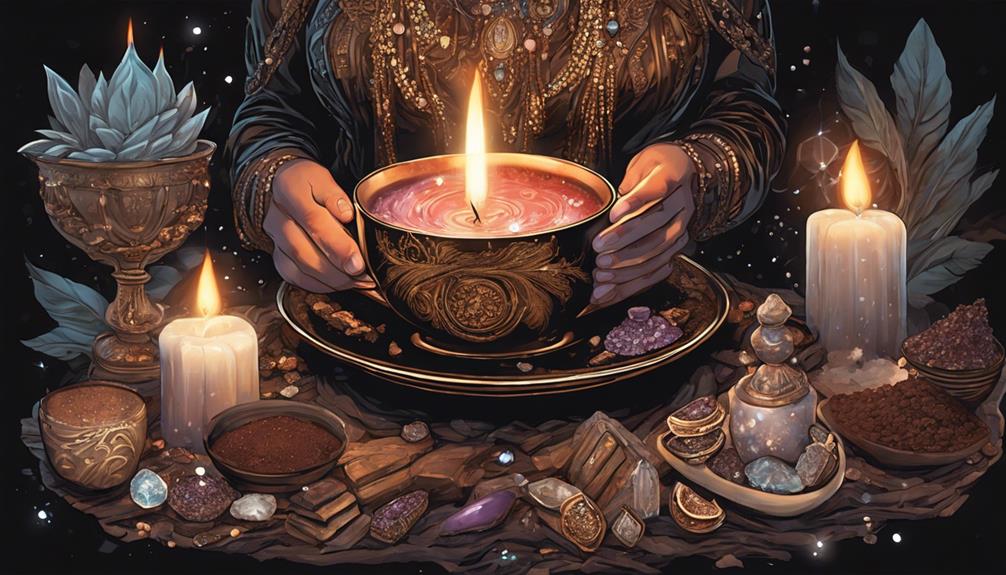
Ceremonial cacao rituals hold a sacred significance, honoring the spiritual connection we share with this revered plant.
To prepare for these rituals, specific methods are employed to guarantee a respectful and intentional interaction with cacao's healing properties.
During the ceremony, the inherent spiritual essence of cacao is revealed, allowing for profound experiences and emotional healing to take place.
Spiritual Connection With Cacao
In the domain of spiritual practices, the sanctity of cacao rituals lies in their ability to create a profound connection to the divine. When engaging with ceremonial cacao, one can experience a spiritual connection that transcends the spiritual sphere. This connection is characterized by a deep sense of reverence and sacredness, enhancing the overall experience of the ritual.
Through the spiritual connection with cacao, individuals may feel a heightened sense of inner exploration and emotional healing. The gentle yet powerful nature of cacao as a heart-opening medicine facilitates a deeper connection to oneself and the divine presence within.
Embracing the spirit of cacao can lead to transformative spiritual experiences that nurture the soul and foster a profound sense of connection to the sacred.
Ritualistic Preparation Methods
Preparation methods for ceremonial cacao rituals involve specific steps to infuse the cacao with sacredness and intention. In ceremonial practices, every stage of the cacao's journey is treated with reverence. From carefully sourcing the cacao beans to the mindful consumption, intentional energy is imbued into the cacao.
Ritualistic practices like blessing the cacao and setting intentions play an important role in enhancing the spiritual connection with the cacao spirit. Ceremonial tools and practices are often utilized to honor the cacao's significance as a sacred plant medicine. By approaching the cacao preparation with mindfulness and respect, we deepen our connection with its healing properties.
Engaging in these ceremonial rituals allows us to tap into the essence of cacao's divine spirit.
Healing Properties of Cacao
Exploring the essence of cacao rituals reveals the profound healing properties and sacredness embedded within this transformative practice.
- Cacao is revered for its heart-opening properties, acting as a sacred gateway for spiritual connection during ceremonies.
- Belonging to the entheogens category, cacao is esteemed for its spiritual significance, offering a vital yet powerful medicine for inner growth.
- Maintaining specific conditions during cacao ceremonies is essential to effectively activate its ceremonial aspects, allowing individuals to connect deeply with the spirit of cacao and experience profound personal transformation.
Qualities of Premium Ceremonial Cacao
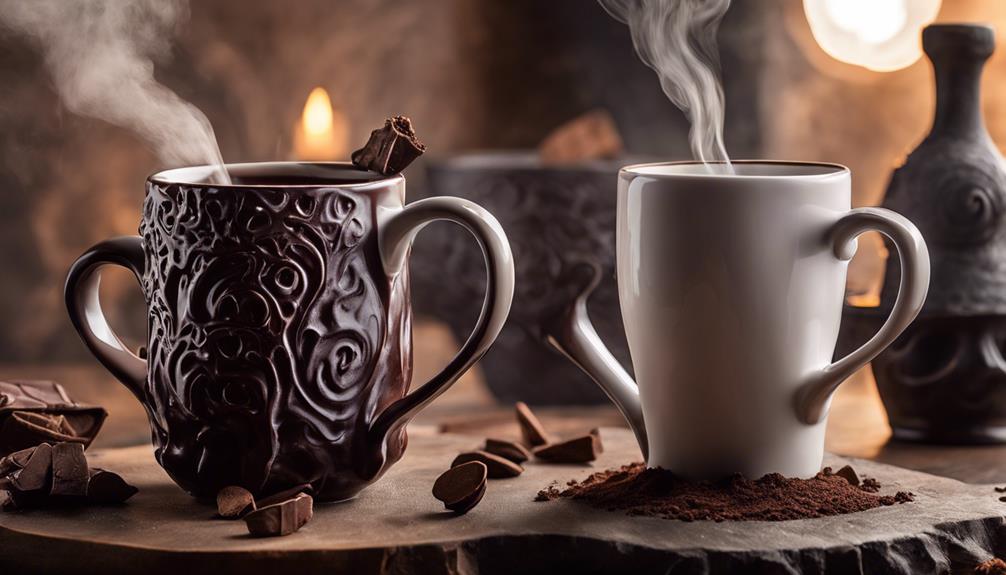
When seeking premium ceremonial cacao, one can expect a transformative experience rooted in the meticulous care taken during cultivation and processing.
This type of ceremonial cacao is crafted from single-origin, high-grade cacao beans, ensuring a rich and authentic flavor profile. The production of premium ceremonial cacao involves intentional practices infused with love, respect, and traditional methods that aim to preserve its exceptional quality.
From the moment the cacao is grown and harvested to the careful processing techniques employed, every step is taken with the utmost care to maintain the purity and integrity of the final product. Sourced from specific regions renowned for their fine flavor, this cacao used in ceremonial practices offers a unique and grounding experience that connects the mind, body, and spirit to ancient traditions.
Frequently Asked Questions
What Is Special About Ceremonial Cacao?
What makes ceremonial cacao special is its ability to deepen connections. This sacred drink isn't just about taste; it's a vessel for mindfulness, relaxation, and spiritual growth. It's more than chocolate; it's a journey within.
What Are the Spiritual Benefits of Ceremonial Cacao?
Connecting with ceremonial cacao brings spiritual benefits such as mindfulness, emotional healing, and deepening meditation. It opens my heart to growth and self-awareness, creating sacred spaces for exploration and connection with higher consciousness.
What Makes Cacao Special?
Cacao is special because of its rich history, deep flavors, and versatile uses in both culinary delights and spiritual ceremonies. Its essence captivates the senses, inviting a magical journey of connection and exploration.
What Is Different About Ceremonial Grade Cacao?
Well, ceremonial grade cacao stands out for its purity and traditional production methods. It's more than just chocolate; it's a spiritual experience. I've found it to be a powerful tool for mindfulness and connection.
What Makes Ceremonial Cacao Different from Regular Cacao for a Cacao Ceremony?
Ceremonial cacao is crafted to enrich rituals, fostering a profound cacao ceremony experience inside the sacred space. Unlike regular cacao, its purity and higher theobromine content facilitate deep connection and introspection, making it an integral ally for spiritual and heart-opening ceremonies.
Conclusion
To sum up, ceremonial cacao isn't just a beverage, but a sacred tool that can connect us to the earth, our inner selves, and the spiritual domain.
Its origins, preparation, and consumption hold deep meaning and significance, making it a powerful ally in rituals and ceremonies.
The energy, medicinal properties, and spiritual connection found in ceremonial cacao can guide us on a journey of self-discovery and transformation, enriching our lives in profound ways.

